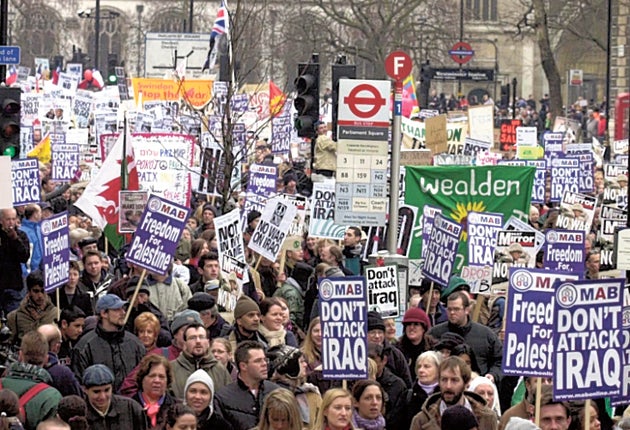A million-strong crowd sounds impressive, but how do the experts calculate that figure?

On Tuesday, the world watched as protesters took to the streets of Cairo, demanding the ousting of President Hosni Mubarak. It was dubbed the "million-man march", an estimate of just how many Egyptians had joined in the demonstration.
But where did the figure of one million come from? When such a crowd gathers, without tickets or being made to go through a turnstile, how do officials work out how many people were actually involved?
After huge protests against the Iraq war were organised in London in 2003, the estimates of how many people attended were almost as contentious as the war itself. While the police said that at least 750,000 people took part, organisers put the figure closer to two million. Is it possible ever to get an accurate figure?
The most common way to count a crowd is the Jacobs Method, named after its inventor, Herbert Jacobs. It was during his time as a journalism lecturer at the University of California, Berkeley during the 1960s anti-Vietnam war riots that he formulated his method. Having an office in a tower that overlooked the plaza where students gathered, Jacobs had a unique view and became frustrated with the police estimates, which he felt greatly exaggerated the number of people involved.
After getting hold of an enlarged aerial photograph of the mob scene, Jacobs divided it up into 1in squares and painstakingly counted all the heads using a magnifying glass. After four hours of counting, he worked out the figure to be less than half what police and newspapers had reported.
He then divided the plaza into 22ft squares and used this to find a more scientific way to calculate crowd size. He attended many of the rallies, and by counting the number of students in several of the squares and dividing accordingly, he was able to work out the average area occupied by an individual. He deduced that this varied from a minimum of 2.5 sq ft for a mosh pit-style mob crowd, to 4 sq ft for a tightly packed crowd, to 9.5 sq ft for a looser one. He then applied his formula to further rallies, checking it against photographs that he took himself.
While analysts still use this method, things have advanced since the Sixties and there are now all sorts of technologies used to assist with such estimations, including satellites, aerial photography, recorded video footage and surveillance balloons, which can be placed around an event's location and flown overhead.
The method is not without its flaws, and the simple answer is that it is impossible ever to know exactly how many people are in a crowd. But whether it's a demonstration, a royal wedding or a visit from the Pope, the reputations of organisations and personal egos can be ballooned or deflated by how large or small a crowd is reported to be.
Subscribe to Independent Premium to bookmark this article
Want to bookmark your favourite articles and stories to read or reference later? Start your Independent Premium subscription today.

Join our commenting forum
Join thought-provoking conversations, follow other Independent readers and see their replies